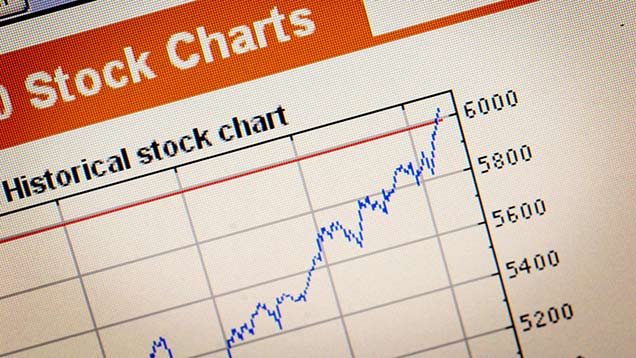Q&A: What causes farmgate price volatility?
 ©Newscast Rex/Shutterstock
©Newscast Rex/Shutterstock Every farm sector is feeling the effects of volatility.
But, for all the term is mentioned, it’s rarely explored in full.
As part of a new series, Farmers Weekly has asked experts what lies behind the upswings and downturns in farmgate prices.
What is volaltility and what is it caused by?
Volatility means sharp movements in the prices of agricultural products or inputs.
See also: Volatility in numbers: 20 years of farmgate prices
But Richard Tiffin, director of the University of Reading’s Centre for Food Security, says it is still a question of supply and demand.
“Agricultural supply is inherently variable because of the weather, and demand tends to be fairly inelastic [it takes a while to respond to other changes],” says Prof Tiffin.
“That means that even very small shifts in the supply curve tend to produce large shifts in the price.”
That doesn’t sound new. Why are British farmers feeling the effects?
World food markets have always been volatile, but the UK and Europe have been protected.
For decades, the European Economic Community and then the EU sheltered producers and shoppers from global trade. Tools like tariff barriers, intervention buying and export refunds smoothed some of the movements.
But succession rounds of CAP reform have pared back many of those measures.
”The market management has pretty much been dismantled,” says Andersons head of business research Richard King. “We are now at a free market level in terms of pricing in agricultural commodities.”
Is it the same story in every sector?
No – even if the overall picture is similar.
The bulk of protections in cereals were removed in the 1990s, so arable farmers have been exposed to global volatility for nearly two decades.
Unsubsidised sectors like pigs and poultry have also had to learn those lessons, with feed values playing a big role in their profitability.
The big change in dairy has been the removal of EU milk quotas, finally abolished in April this year. In anticipation, European milk prices were trending towards global ones for the last few years.
Andersons’ Richard King says the situation is different for red meat sectors, where the EU still has import quotas.
UK sheepmeat prices are locked into a seasonal cycle and, as a third of production is exported, the currency markets are a big factor.
Last year’s beef price collapse followed an extraordinary surge in demand for British meat after the 2013 Horsemeat scandal. Prices hitting all-time highs proved too expensive for shoppers.
“There is still more protection in the red meat sector in Europe than perhaps cereals and milk,” Mr King says.
But we’ve seen some huge swings since 2007-08. Is the world becoming more volatile?
It is hard to tell.
The last decade has seen particularly dramatic events: a financial crisis, a food and oil price spike, drought in the US Midwest. These caused the enormous peaks and troughs that give the impression of greater volatility.
Countries around the world are also carrying smaller stocks of agricultural products. Keeping commodities in store carries a cost and those stocks have been run down in recent years, removing a buffer from any shifts in supply and demand.
Commodity speculation and the internet’s fast exchange of information could also been playing a role. Currencies fluctuations are one more factor: the pound has strengthened 17% against the euro since February, making British exports more expensive.
Whether world volatility is worsening is unclear, but European farmers are certainly more exposed to what is happening around the world.
“Any volatility on the international markets is transmitted much more readily into the domestic market,” Prof Tiffin says. “That volatility has always been there, but we see more of it.”
What’s the impact on farmers?
As the past 12 months has shown, extreme volatility plays havoc with farmers’ cashflows.
Prof Tiffin says producers will have to make a living in a new, unprotected policy environment.
“There has to be some business restructuring: where farmers used to carry pretty large overdrafts, that probably means you are too exposed,” he says.
“It may be there needs to be some consolidation in the farming sector so farmers are better able to cope.”
For Mr King, risk management and looking at the shape of the enterprise are most important – not necessarily its size.
“Big is not necessarily more resilient than small,” he says. “It is about being a profitable business and probably a low-cost business. Then you can make a profit across a wider range of prices.”
